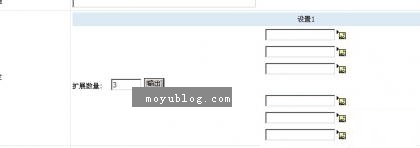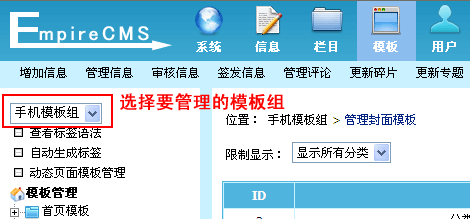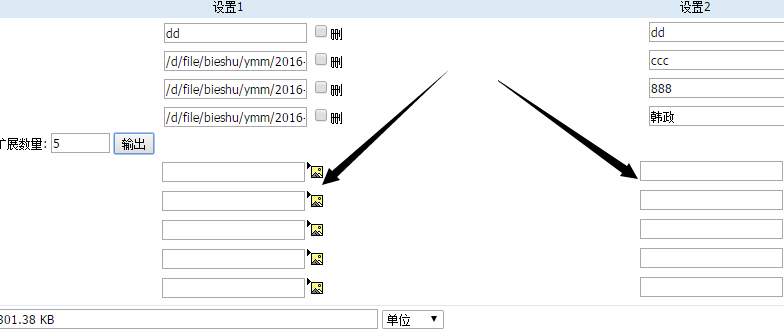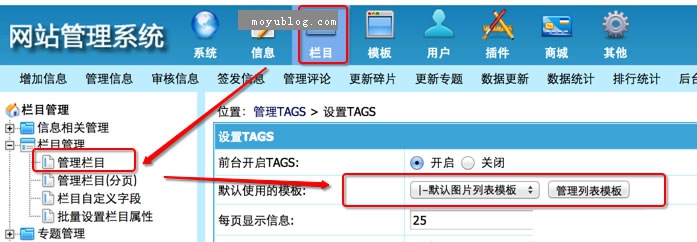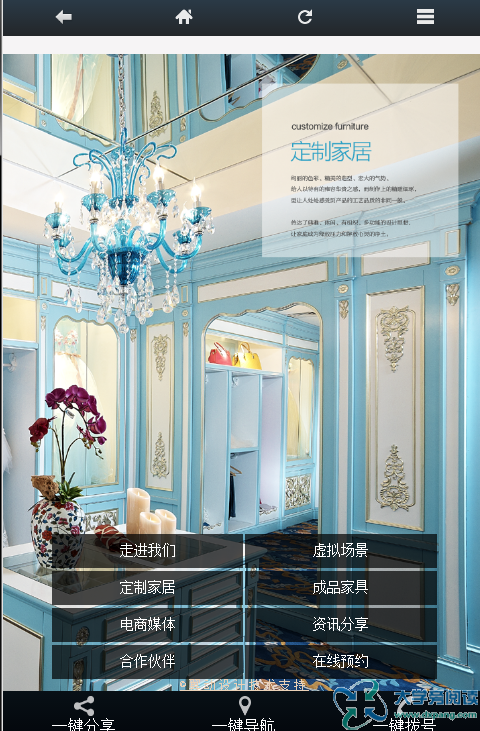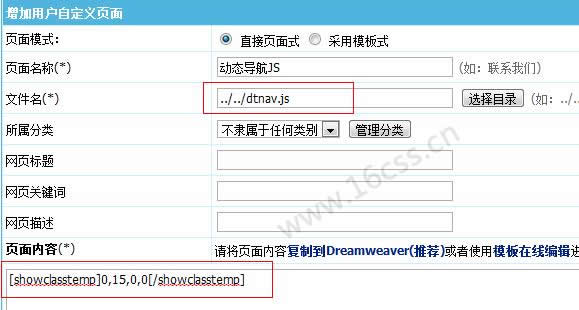上一篇:[!--info.pre--] 下一篇:[!--info.next--]
一、动态调用上一篇下一篇链接
代码如下:<a href="[!--news.url--]e/public/GotoNext?classid=[!--classid--]&id= [!--id--]&enews=pre">上一篇</a>动态调用上一篇链接
代码如 下:<a href="[!--news.url--]e/public/GotoNext?classid=[!--classid--]&id= [!--id--]&enews=next">下一篇</a>动态调用下一篇链接
二、灵动标签和SQl语句调用
上一篇链接:
代码如下:[e:loop={"select id,classid,newspath,filename,groupid,titleurl from [!db.pre!]ecms_".$class_r[$navinfor[classid]]['tbname']." where id<".$navinfor[id]." and classid=".$navinfor[classid]." and checked=1 order by id desc limit 1",1,24,0}]
<?php
$titleurl=sys_ReturnBqTitleLink($bqr);
echo $titleurl;
[/e:loop]
下一篇链接:(把小于号改成大于号)
代 码如下:[e:loop={"select id,classid,newspath,filename,groupid,titleurl from [!db.pre!]ecms_".$class_r[$navinfor[classid]]['tbname']." where id>".$navinfor[id]." and classid=".$navinfor[classid]." and checked=1 order by id desc limit 1",1,24,0}]
<?php
$titleurl=sys_ReturnBqTitleLink($bqr);
echo $titleurl;
[/e:loop]
三、运用灵动标签调用,比较简洁的方式(感谢 落木萧萧)
代码如下:<!--上一篇-->
[e:loop={'selfinfo',1,0,0,'id<'.$navinfor[id].'','id desc'}]
<a href="<?php
echo $bqsr[titleurl];
$pre='true';
?>">上一篇:<?=$bqr[title]?>
</a>
[/e:loop]
<?php
if(emptyempty($pre)){
echo "上一篇:很抱歉没有了";
}
?>
<!--下一篇-->
[e:loop={'selfinfo',1,0,0,'id>'.$navinfor[id].'','id asc'}]
<a href="<?php
echo $bqsr[titleurl];
$next='true';
?>">下一篇:<?=$bqr[title]?>
</a>
[/e:loop]
<?php
if(emptyempty($next)){
echo "下一篇:很抱歉没有了";
}
?>
四、控制上一篇下一篇标题字数(截取30个字符为例)
运用:
代码如下:<?=esub($bqr[title],30)?>
代码如下:<!--上一篇-->
[e:loop={'selfinfo',1,0,0,'id<'.$navinfor[id].'','id desc'}]
<a href="<?php
echo $bqsr[titleurl];
$pre='true';
?>">上一篇: <?=esub($bqr[title],30)?></a>
[/e:loop]
<?php
if(emptyempty($pre)){
echo "上一篇:很抱歉没有了";
}
?>
<!--下一篇-->
[e:loop={'selfinfo',1,0,0,'id>'.$navinfor[id].'','id asc'}]
<a href="<?php
echo $bqsr[titleurl];
$next='true';
?>">下一篇:<?=esub($bqr[title],30)?>
</a>
[/e:loop]
<?php
if(emptyempty($next)){
echo "下一篇:很抱歉没有了";
}
?>
扫一扫手机访问


